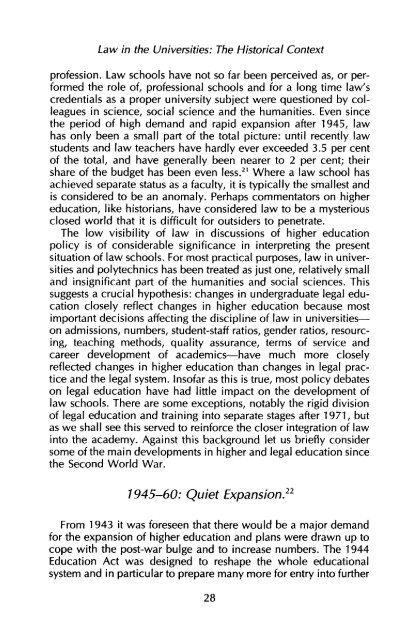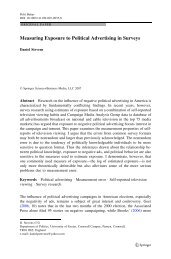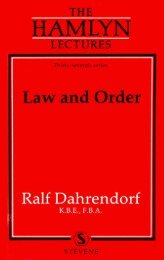Blackstone's Tower: The English Law School - College of Social ...
Blackstone's Tower: The English Law School - College of Social ...
Blackstone's Tower: The English Law School - College of Social ...
Create successful ePaper yourself
Turn your PDF publications into a flip-book with our unique Google optimized e-Paper software.
<strong>Law</strong> in the Universities: <strong>The</strong> Historical Context<br />
pr<strong>of</strong>ession. <strong>Law</strong> schools have not so far been perceived as, or performed<br />
the role <strong>of</strong>, pr<strong>of</strong>essional schools and for a long time law's<br />
credentials as a proper university subject were questioned by colleagues<br />
in science, social science and the humanities. Even since<br />
the period <strong>of</strong> high demand and rapid expansion after 1945, law<br />
has only been a small part <strong>of</strong> the total picture: until recently law<br />
students and law teachers have hardly ever exceeded 3.5 per cent<br />
<strong>of</strong> the total, and have generally been nearer to 2 per cent; their<br />
share <strong>of</strong> the budget has been even less. 2 ' Where a law school has<br />
achieved separate status as a faculty, it is typically the smallest and<br />
is considered to be an anomaly. Perhaps commentators on higher<br />
education, like historians, have considered law to be a mysterious<br />
closed world that it is difficult for outsiders to penetrate.<br />
<strong>The</strong> low visibility <strong>of</strong> law in discussions <strong>of</strong> higher education<br />
policy is <strong>of</strong> considerable significance in interpreting the present<br />
situation <strong>of</strong> law schools. For most practical purposes, law in universities<br />
and polytechnics has been treated as just one, relatively small<br />
and insignificant part <strong>of</strong> the humanities and social sciences. This<br />
suggests a crucial hypothesis: changes in undergraduate legal education<br />
closely reflect changes in higher education because most<br />
important decisions affecting the discipline <strong>of</strong> law in universities—<br />
on admissions, numbers, student-staff ratios, gender ratios, resourcing,<br />
teaching methods, quality assurance, terms <strong>of</strong> service and<br />
career development <strong>of</strong> academics—have much more closely<br />
reflected changes in higher education than changes in legal practice<br />
and the legal system. Ins<strong>of</strong>ar as this is true, most policy debates<br />
on legal education have had little impact on the development <strong>of</strong><br />
law schools. <strong>The</strong>re are some exceptions, notably the rigid division<br />
<strong>of</strong> legal education and training into separate stages after 1971, but<br />
as we shall see this served to reinforce the closer integration <strong>of</strong> law<br />
into the academy. Against this background let us briefly consider<br />
some <strong>of</strong> the main developments in higher and legal education since<br />
the Second World War.<br />
22<br />
1945-60: Quiet Expansion.<br />
From 1943 it was foreseen that there would be a major demand<br />
for the expansion <strong>of</strong> higher education and plans were drawn up to<br />
cope with the post-war bulge and to increase numbers. <strong>The</strong> 1944<br />
Education Act was designed to reshape the whole educational<br />
system and in particular to prepare many more for entry into further<br />
28

















